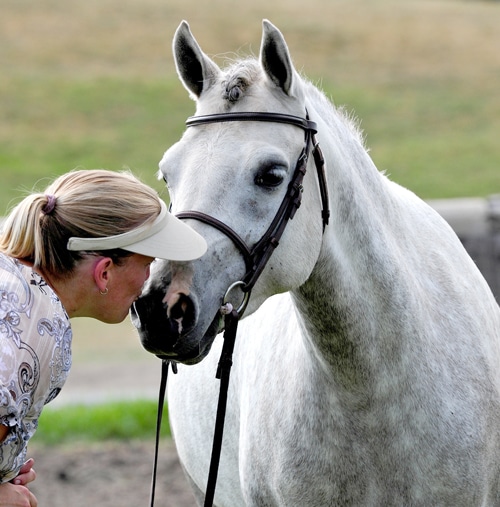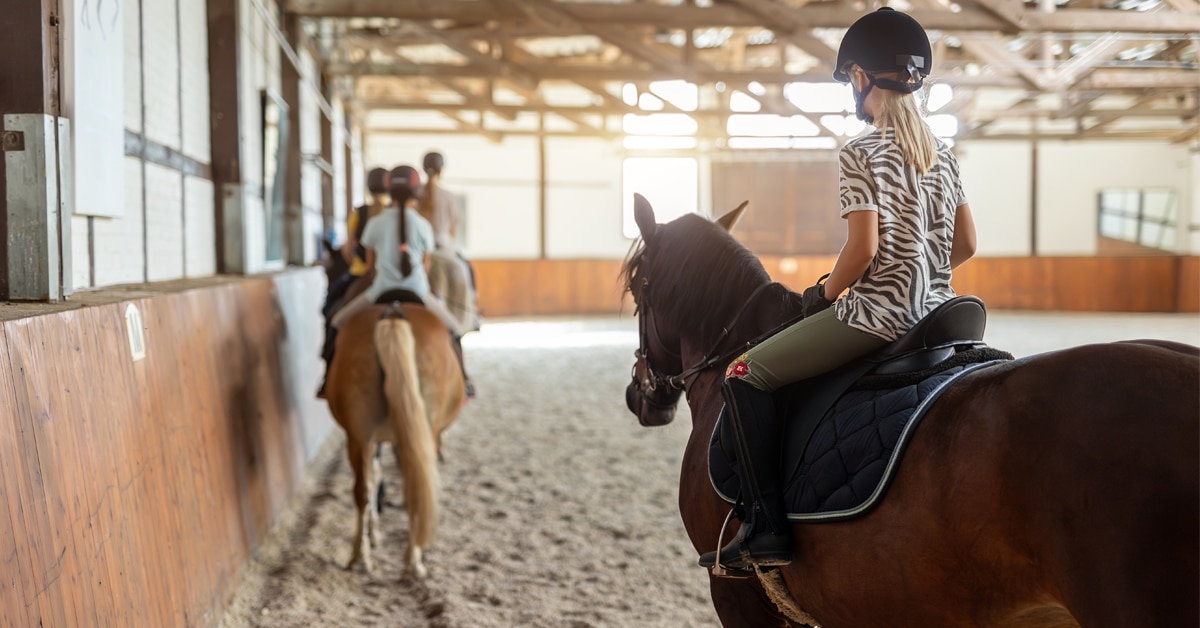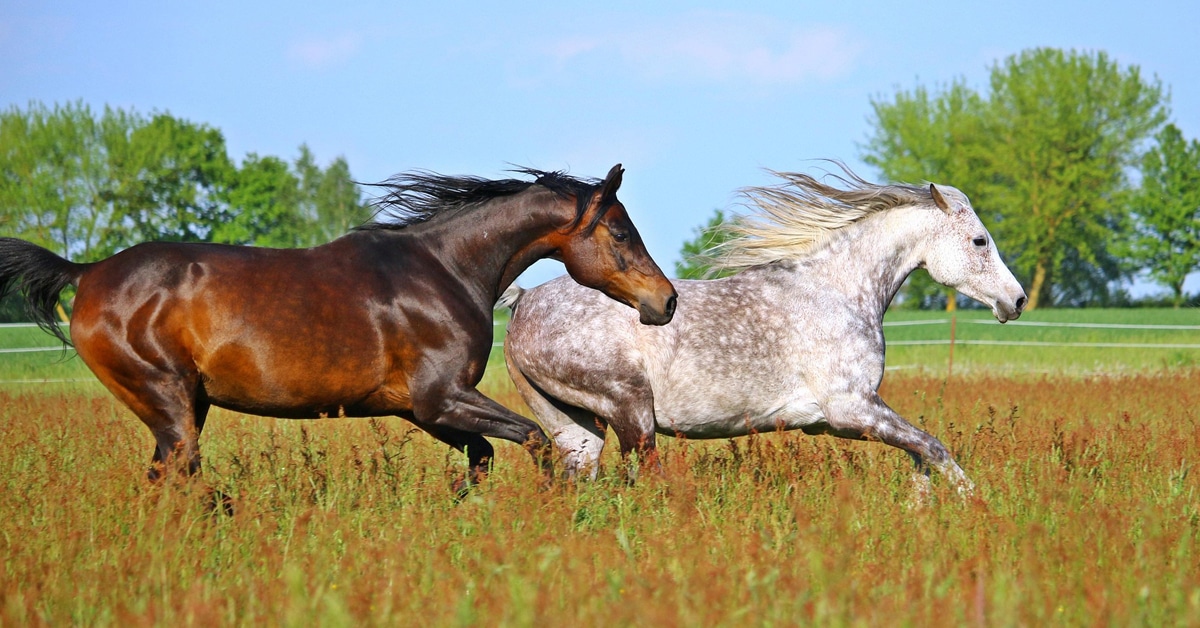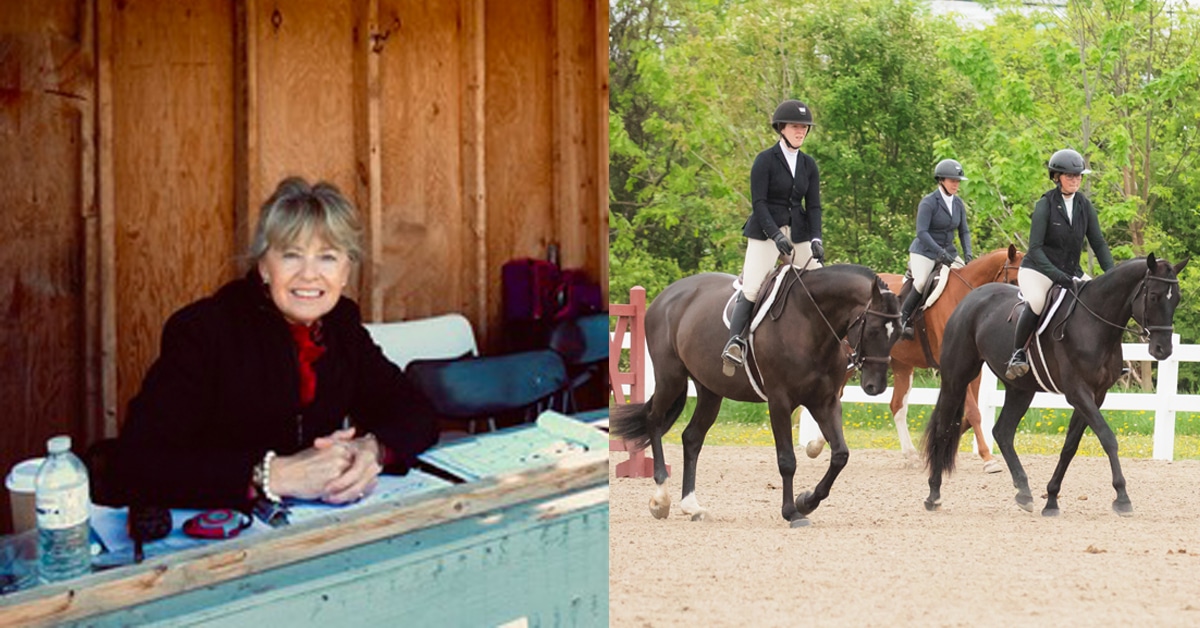Tracy Dopko is an EC Senior and USEF R hunter and equitation judge, r jumper judge, FEI steward, and officiates throughout North America. She is also an ISA Certified Appraiser with a specialty in equine, livestock and farm equipment. Tracy showed on the US and Canadian hunter/jumper circuits and breeds warmbloods, hunter ponies, and Welsh Cobs at her Daventry Equestrian in Darwell, Alberta.
What do you look for when a horse first enters the ring?
Proper turnout and tack are important. Even if you are late getting to the ring, take the time to clean your boots before you enter. Both the horse’s hair coat and socks should be clean. Make sure the horse’s tail is free of shavings and debris. Judges notice when a competitor has (or hasn’t) put in the extra effort.
I don’t mind pony riders coming into the ring with pigtails and show bows, but they should only do so if they are wearing jodhpurs, paddock boots, and garter straps. If you wear a hairnet, pick one similar to your hair colour. The judge should not be noticing your hairnet from across the ring.

Good ponies deserve kisses! (courtesy of Tracy Dopko)
What are the most common errors you see in the hunter ring?
The first is not enough pace at the beginning of the course. A pace that is too slow at the beginning, or an inconsistent pace, can affect the overall score. Establishing a good, consistent pace at the beginning of the course is important.
The other common error I often see happens when a rider is unable to see their distance on the approach to a fence. In this situation, some riders tend to hold back on the reins and remove their leg from the horse’s side in hopes of eventually seeing a distance. Unfortunately, the more a rider waits for a distance to appear, the less likely they are to find a good distance, which creates other issues. Slowing the pace to find a distance also makes it more challenging for the horse to jump the fence. If a rider is unable to see a distance, the best solution is to allow the horse to continue moving forward and keep the rhythm, as maintaining rhythm and pace allows the horse to have options at the jump.
When you score a class out of 100, how much do certain errors cost you?
Modern hunter classes go back to the traditions of foxhunting, where horses and riders pursued a fox over varied countryside and natural obstacles. Successful foxhunting horses were brave, well-trained, had good jumping form in order to get over the natural obstacles, and a ground-covering stride. Modern hunters are judged on their jumping style, manners, and way of going to reflect this tradition. As a result, it’s important to understand that a high-quality horse with a couple of minor errors will often place above an average horse with one minor error.
A break of gait or trotting on course is often an automatic 55. This again goes back to traditional foxhunting, as breaking gait means the horse will be unable to keep up with the pack. This also means that if there is a trot jump on course and the horse lands after the jump in a trot instead of a canter, this is considered a break of gait as well and results in a score of 55. Leaving out a stride in a line is not only dangerous at times, but in traditional foxhunting it means your horse has passed the master of foxhounds, and you will not be invited back to the next hunt! As a result, leaving out a stride in a line is often scored 60 or less.
How do you break a tie?
There will always be something that separates two horses at the top of my judge’s card. A horse that has more quality attributes than the other horse will often be the deciding factor.
How can you best ride a hunter under saddle class?
A couple of mistakes competitors make are not taking full advantage of showing off a good quality horse to the judge, and remaining along the rail, where we may end up missing you from our booth. It’s perfectly acceptable to ride the quarter line on the side closest to the judge’s booth. If you have a high-quality horse, ensure you don’t get lost within a group ‒ find a spot where you will stand out. Be aware that some judges scope out horses from the minute they walk into the ring, even though you are not technically being judged until the class is called to order.
What is one thing that you wish trainers paid more attention to when setting up a horse/rider combination for the show ring?
The suitability of horse to rider. Making sure a horse is well matched to the rider not only creates a cohesive team in the competition ring, but it is especially important for lower-level junior and amateur riders, as it aids in their level of confidence and education.
Additionally, although the majority of trainers and competitors put in the effort before they walk into the competition ring, I do notice a lack of horsemanship in others, and this really goes back to the trainers ensuring their riders are well-prepared for competitions.
What is your advice for equitation and medal trips?
It can be frustrating to watch a competitor concentrate on looking pretty, rather than riding effectively. Riding effectively and keeping an even pace throughout the ride is crucial. Keeping an even pace is even stated under the equitation division in our Equestrian Canada rulebook.
Bold inside turns can often work out well, but only if they are performed well. As a result, depending on the horse and rider, the bold inside turn might not always be the best turn.
A tip for competitors who are using a pelham: the pelham rein should be on the inside, and the snaffle rein on the outside. And please, no posting at the canter! It is not acceptable in the equitation ring.
A well-fitted show jacket goes a long way, especially in the equitation ring. There is a recent trend of short show coats, and in my opinion, they are not flattering. A well-fitted show jacket should have a taper-cut and be slightly flared at the bottom, as this helps create a flattering silhouette. The coat length should cover about two-thirds of the rider’s behind when they are standing on the ground, and when mounted, the coat should just lightly touch the saddle seat.
Not all show jackets will fit all riders the same way, so it is important for a rider to find the appropriate jacket for their body type and not worry about wearing the same jacket that their friend is. A well-fitted show jacket will have a tailored look. It is extremely noticeable if a jacket is too small/short or too baggy. Competitors spend so much time and money getting ready for the horse show season, spending thousands of dollars on their custom-made boots and saddles, yet they don’t consider having a tailor make a few alterations so their show jacket fits well. Save a few dollars on your Starbucks drinks and spend the money on a tailor!
Do all judges judge the same?
At the senior level, there does tend to be more consistency with scores. But it’s also important to realize that what you witness from the other side of the ring may be a very different view from inside the judging booth. It’s also important to understand that, to some degree, judging hunters is subjective, and different judges may bring different experiences with them to the judging booth.
The Latest










